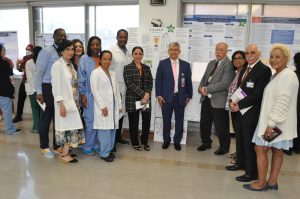 The MediSys Health Network of Jamaica Hospital and Flushing Hospital Medical Centers recently held its Third Annual Research Conference and Poster Competition. Sponsored by the Department of Research Education and Innovation and the Department of Clinical Research, the event allows the entire MediSys hospital community to present any scholarly activity they had done over the past academic year of 2023-2024.
The MediSys Health Network of Jamaica Hospital and Flushing Hospital Medical Centers recently held its Third Annual Research Conference and Poster Competition. Sponsored by the Department of Research Education and Innovation and the Department of Clinical Research, the event allows the entire MediSys hospital community to present any scholarly activity they had done over the past academic year of 2023-2024.
Director of the Department of Research Education and Innovation, Dr. R. Jonathan Robitsek explained, “The competition is a great showcase of the intellectual curiosity of all that participate”. He also highlighted the importance of the competition noting, “It’s high-quality research some of which has been presented at national and international medical conferences”.
There were 131 posters submitted between Jamaica Hospital and Flushing Hospital. Those posters were broken into three categories, Case Reports, Empirical Research, and Quality Improvements. Each poster was then graded on a rubric of five areas: format, visual, content 1, content 2, and impact.
The first-place winning posters in the Case Reports category were, “A Cycle of Complications: Trastuzumab-induced Takotsubo Cardiomyopathy Causing LV Thrombosis Complicated by Thromboembolic Stroke” by V. Patel, J. Patel, J.L Lee, and T. Okan (JHMC) and “Making the Distinction between Cardiac and Vasovagal Syncope in a Patient with an Intracardiac Mass” by D. Desta, P. Kiarie, and R.P Gupta (FHMC).
Second-place winning posters of the category included, “Subcapsular Liver Bleed Secondary to Mal-Placement of a Lucas Device” by I. Agha, S. Montaquila, M. Guerges, A. Mangla, and R. Lakowski (JHMC) and “When the Lungs Become the Battlefield: Bronchiolitis Obliterans Syndrome in GVHD Post Stem Cell Transplant for AML.” by J. Bawa, A. Inghirami, S. Desai, J. Silverman (FHMC).
And finally, the third place posters were, “Impact of Social Media in Acute Onset of Psychosis in Young Child” by H. Ruparel, G. Zelin, S. Peteru (JHMC) and “Skin Deep: Exploring Erythema Nodosum Induced by Dupilumab Therapy” by J. Bawa, E. Malana, N. Tasnim, S. Farhan, A. Khan (FHMC).
In the Empirical Research category, the posters that won first place were, “Demographic Analysis of Patients Seen by a Palliative Care Service Found to be Unbefriended/Unrepresented” by P. Gordon, I.J Wang, R.J Robitsek, A. Tewari, E. Divino, K. Forbes (JHMC) and “Attitudes and Barriers to Utilization of Osteopathic Manipulative Treatment in Clinical Practice Among Residents and Medical Students: A Survey Study” by C. Bodden, M. Alla, P. Kiarie, M.A Louis (FHMC).
Second-place winning posters were, “Does Marijuana Legalization Result in Increased Psychiatric Emergency Visits for Cannabis Induced Psychosis?” by G. Zelin, N. Siddiqui, A. Miele, R. Kamal (JHMC) and “Postoperative Atrial Fibrillation in Emergent Non-Cardiac Surgery: Incidence, Risk Factors, and Outcomes” by D. Giannis, R. Zhao, L. Fernandez, N. Nikolov, C. Sneed, P. Kiarie, A. Miele, M.A Louis, N.R Mandava (FHMC).
Lastly, the third-place winning posters of the category were, “Systematic Review of Hematologic Values Among Transgender Patients: Establishing Standardized Reference Ranges to Improve Clinical Care” by L. Yap-Separovich, M. McDonald, L. Alhakim, J. Langaman, T. Millingen, A. Mir, L. Gance, C. Nienaber, A. Roth, G. Basello, E. Brondolo (JHMC) and “The Effect of Circadian Rhythm on the Glucose Challenge Test in Pregnancy” by A. Makol, M. Sun, L. Keating, I. Ngai (FHMC).
In the final category of Quality Improvements, the first-place winning posters were, “Advance Care Conversations in Primary Care Settings: Prevalence and Sociodemographic Factors” by I.J Wang, D. Patel, A. Spinelli, M. McDonald, A. Miele, R.J Robitsek, F. Falcone, K. Forbes, E. Brondolo, A. Roth, S. Mathew-Geevarughese (JHMC) and “Evaluating the Long Term Impact of Standardizing Written Sign Outs” by T. Lildar, W. Thu, S. Falak, M. Syed, S. Desai, A. Miele, K.L Cervellione, T. Toronjadze (FHMC).
Congratulations to those who placed, the honorable mentions, and everyone who participated in this year’s Research Day Conference and Poster Competition.
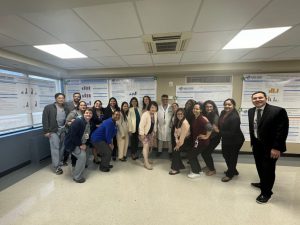
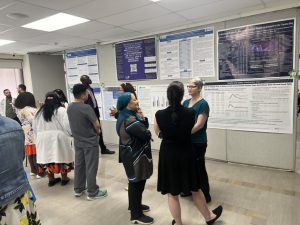
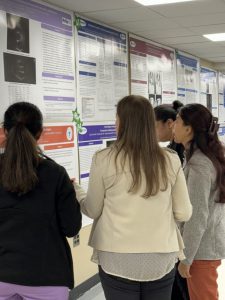
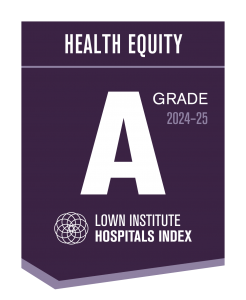 The Lown Institute has recognized Jamaica Hospital and Flushing Hospital Medical Centers for excellence in health equity, receiving an “A” grade on the 2024-25 Lown Institute Hospitals Index for Social Responsibility.
The Lown Institute has recognized Jamaica Hospital and Flushing Hospital Medical Centers for excellence in health equity, receiving an “A” grade on the 2024-25 Lown Institute Hospitals Index for Social Responsibility.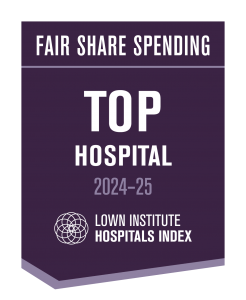
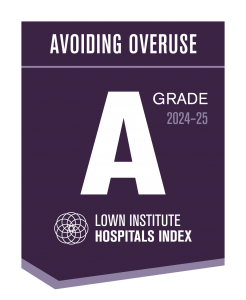
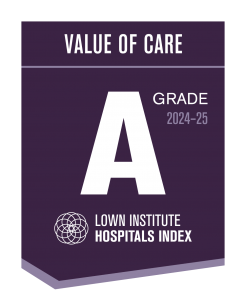
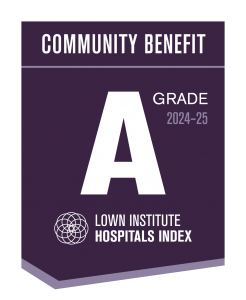





 The MediSys Health Network of Jamaica Hospital and Flushing Hospital Medical Centers recently held its Third Annual Research Conference and Poster Competition. Sponsored by the Department of Research Education and Innovation and the Department of Clinical Research, the event allows the entire MediSys hospital community to present any scholarly activity they had done over the past academic year of 2023-2024.
The MediSys Health Network of Jamaica Hospital and Flushing Hospital Medical Centers recently held its Third Annual Research Conference and Poster Competition. Sponsored by the Department of Research Education and Innovation and the Department of Clinical Research, the event allows the entire MediSys hospital community to present any scholarly activity they had done over the past academic year of 2023-2024.


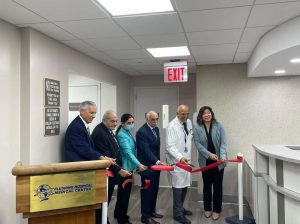 Flushing Hospital Medical Center hosted a ribbon-cutting ceremony to celebrate the opening of its new, state-of-the-art dental center.
Flushing Hospital Medical Center hosted a ribbon-cutting ceremony to celebrate the opening of its new, state-of-the-art dental center. Cytomegalovirus (CMV) is a common virus that can affect people of all ages. In fact, over half of all adults have been infected with CMV by the age of 40, but in most healthy adults, the immune system will prevent the virus from causing illness while some may experience mild symptoms such as fever or sore throat.
Cytomegalovirus (CMV) is a common virus that can affect people of all ages. In fact, over half of all adults have been infected with CMV by the age of 40, but in most healthy adults, the immune system will prevent the virus from causing illness while some may experience mild symptoms such as fever or sore throat.